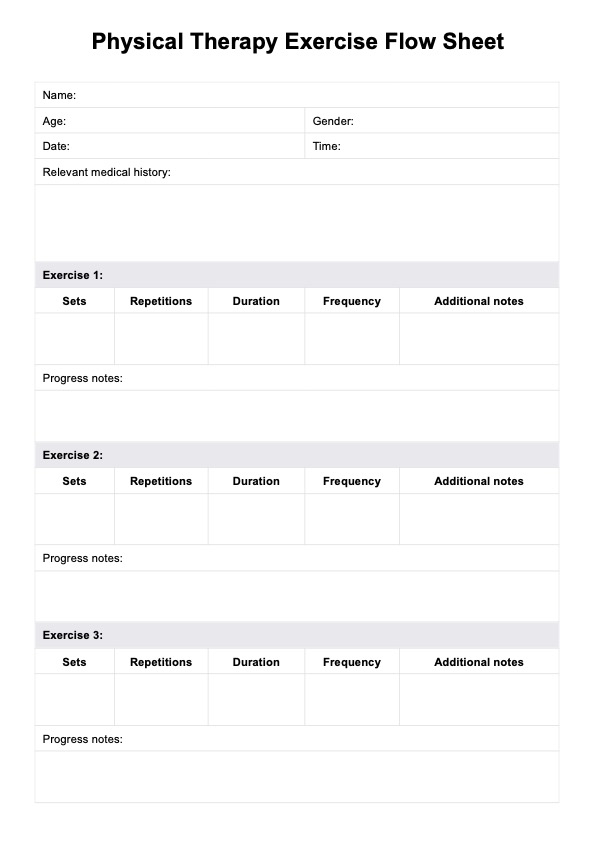A flow sheet in physical therapy is a structured document used to track and monitor patients' exercise regimens, progress, and treatment plans. It serves as a centralized tool for organizing and documenting rehabilitation efforts.

Physical Therapy Exercise Flow Sheet PDF
Effectively document and plan sessions to enhance patient care with our Physical Therapy Exercise Flow Sheet PDF.
Physical Therapy Exercise Flow Sheet PDF Template
Commonly asked questions
A flowsheet in physical therapy typically contains sections for patient information, exercise details (including sets, reps, frequency, and duration), progress notes, therapist signatures, and feedback/comments. It serves as a comprehensive record of the patient's rehabilitation journey.
To create a customized flow sheet on Carepatron, navigate to the templates section of the software, select the option to create a new flow sheet, and customize it according to your specific requirements by adding exercise details, patient information, and any other relevant fields.
EHR and practice management software
Get started for free
*No credit card required
Free
$0/usd
Unlimited clients
Telehealth
1GB of storage
Client portal text
Automated billing and online payments











